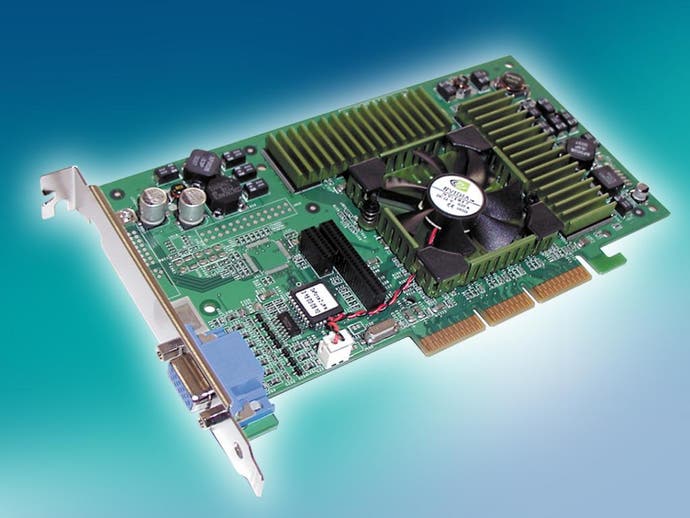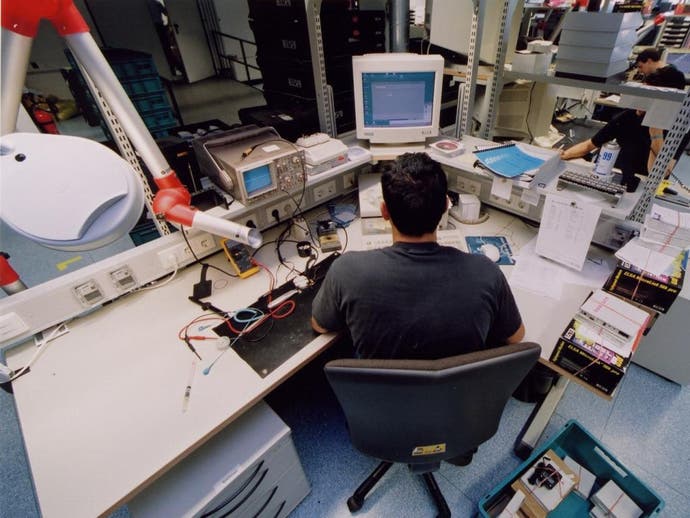Peter Huddleston of ELSA
Interview - ELSA's UK product manager talks about the state of the PC graphics card industry
Over the last few years the graphics card industry has changed almost beyond recognition. Traditional market leaders like S3 and Matrox have fallen by the wayside, and 3D graphics pioneer 3dfx is closing up shop and selling their patents, technologies and brand names to arch-rival NVIDIA.
One of NVIDIA's many customers is board manufacturer ELSA, who also produce everything from monitors and video-conferencing systems to ISDN routers and modems. Founded way back in 1980, the company is based in the German city of Aachen. We caught up with Peter Huddleston, product manager of the UK branch of ELSA, to find out more about the company and the PC graphics industry in general.

Differentiation
Since the recent collapse of 3dfx there has been very little competition for NVIDIA in the hardcore gaming market, with only ATI's Radeon chipset currently offering any credible opposition. NVIDIA is now essentially the only company licensing gaming-oriented graphics chipsets to board manufacturers rather than selling their own cards directly.
So given that all of these companies (ELSA, Hercules, Creative Labs, ASUS, Leadtek et al) are using the same basic range of chips on their cards, what can a company like ELSA do to differentiate their cards from the competition? "The reference board design leaves room for choices between different sets of product features and different market specific versions of a board", Peter told us. "Also, choices can be made between components of different quality levels."
"We use our experience in the graphics business to identify exactly those components that ensure an especially high quality level. Our graphics cards also undergo extensive testing so that customers receive boards that will run stable and can be relied upon by professional users. High quality, good service and support as well as very interesting software bundles - that is how we differentiate our products."

Changes
The relative lack of competition for NVIDIA doesn't mean that the rapid pace of development that we have seen in the PC graphics industry over the last few years will begin to slow down though. "The pace of change will remain high since any slow-down would strengthen potential competitors", Peter believes.
Judging from past evidence he is probably right - 3dfx soon fell behind when they failed to push the envelope, and everybody was taken by surprise when ATI suddenly became NVIDIA's chief competitor last year with the release of the Radeon. Competition between the different board manufacturers will also help keep the market moving according to Peter. "There will be no lack of competition since the market will see different product variations based on [NVIDIA's] reference design".
Meanwhile the limited range of basic chips powering most PCs may actually help the gaming industry, as the reduced competition between graphics chip developers means that the few remaining leading companies are now largely supporting the same features. One of the biggest problems plaguing developers working on the PC has traditionally been the huge variety of hardware and software they need to support, but now "developers will benefit from a smaller number of different platforms, and customers will see a higher standard of quality and will have fewer problems with incompatibilities".

Consolidation
Board manufacturers aren't immune to the changes that have swept through the chip design side of the graphics industry either, and already there have been some casualties. Over the last few years Hercules was bought by European manufacturer Guillemot, and STB and Diamond were both absorbed by chip designers (3dfx and S3 respectively) which later collapsed.
"The consolidation among board manufacturers will continue, with key players exiting the graphics cards business", according to Peter. "Only those companies that focus on specific market segments and succeed in optimising their value chains will survive. ELSA will remain successful in this market because of our expertise in the business, combined with our strong brand and our strategic agreement with NVIDIA as the best provider of graphics technology."
In fact things are actually looking rather bright at the moment for the big board manufacturers and those capable of adapting to changing circumstances. Although motherboards including on-board sound and graphics remain popular at the lower end of the PC spectrum, Peter is confident that "specialized high-end graphics solutions will not be integrated on the main board", adding that despite rumours to the contrary "the add-in graphics card market is actually growing".

Is The Price Right?
Something else which is growing at the moment though is the cost of cutting-edge graphics cards, reversing the trend after a long period of slumping prices. Top-end cards like the GeForce 2 Ultra retail for as much as £350 today, when only a year ago £200 was considered fairly expensive, and the newly announced GeForce 3 will cost you even more.
But what is causing this sudden rise in prices? The cynical amongst us might argue that it's a result of decreased competition. After all, there is currently no mainstream graphics card on the market that can even approach the top end of the GeForce range when it comes to brute force rendering power, so NVIDIA and their licensees can charge pretty much what they want. But according to Peter the jump in prices over the last year is mostly due to "the fast growing complexity of chips and high prices of fast memory". Chips like the GeForce 2 Ultra require large quantities of exotic memory to avoid creating any bottlenecks, and memory is now one of the most costly parts of a graphics card. "The strong US Dollar also prevents lower prices in countries other than the US or Japan", which explains (at least in part) why prices here in the UK and Europe are often higher than on the other side of the pond.
The real question at the moment though is whether there is really a market for graphics cards which cost more than $500. Although many hardcore gamers paid out that much for a pair of Voodoo 2 cards just a few years ago, since then prices have plummetted, and for around the £100 mark you can pick up competent budget cards like the GeForce 2 MX. Peter thinks the market is there though. "There is always a market for high-end products. And just like in the automotive industry, where mass production cars can benefit from Formula 1 technology, all cards in our product range will benefit from high-end technology such as that currently implemented in the Gladiac Ultra and the products that are coming up."
With NVIDIA's latest chip just announced, we should know soon just what those new products are going to be. What does seem certain though is that any new card will be faster, more fully featured and more expensive than the GeForce 2 Ultra. So start saving up your euros...
-
Alan Tiquet (NVIDIA) interview
ELSA Erazor III Pro Video review







